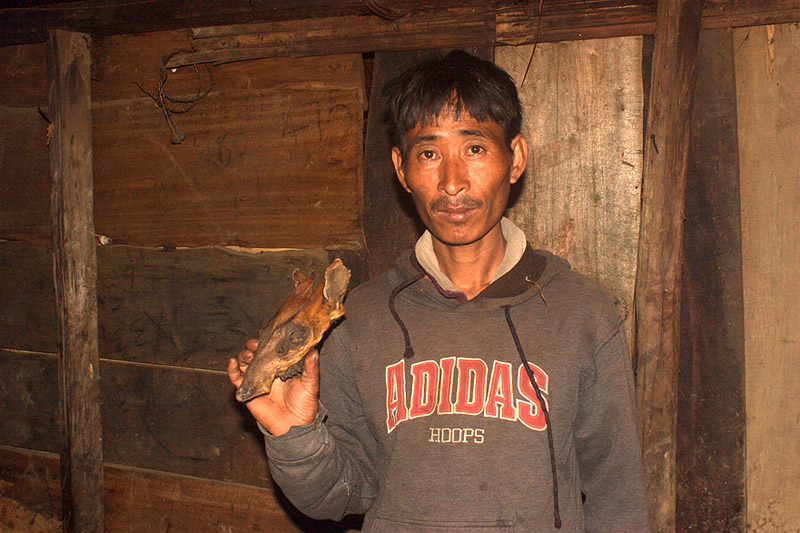
Leaf Deer, Leaf Muntjac or Putao muntjac (Muntiacus putaoensis) is not very well known in India. In a biodiversity survey in Thanamir (base of Mt. Saramati, 3840 m), Eastern Nagaland (May 2011), post-graduate students of M.Sc wildlife biology and conservation, WCS-India & NCBS, Bangalore discovered the presence of skulls of this deer. Subsequent genetic testing on skin samples corroborated the finding. This finding is very significant as it will enhance the deer’s geographical range by 1.5 times.
The Leaf Deer is a small species of muntjac. It was discovered in 1997 by wildlife biologist Alan Rabinowitz then with the Wildlife Conservation Society (WCS) during his field study in the isolated Naungmung area in Myanmar. Hunters knew of the species and called it the Leaf Deer because its body could be completely wrapped by a single large leaf.
Anticipating its existence in neighbouring Jairampur Forest Division of Changlang District, Arunachal Pradesh, India, a team led by Aparajita Datta of the Nature Conservation Foundation (NCF) confirmed the presence of Leaf Deer during field surveys conducted in 2002 (Datta et al 2003).

 CI is a non-profit, non-commercial portal that aims to facilitate wildlife and nature conservation by providing reliable information and the tools needed to campaign effectively.
CI is a non-profit, non-commercial portal that aims to facilitate wildlife and nature conservation by providing reliable information and the tools needed to campaign effectively.
Chosen as 'Picture of the Week'
Urgent attention is needed to find out more about the status of Leaf Deer in Nagaland, and in other parts of Northeast India. No live animal has been recorded or photographed yet in India. Intensive camera trapping along the eastern border of Nagaland will add more knowledge of the distribution of the species in Nagaland.